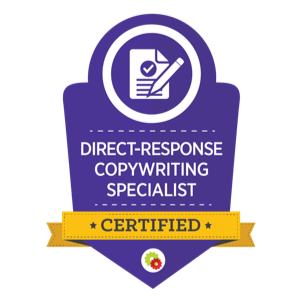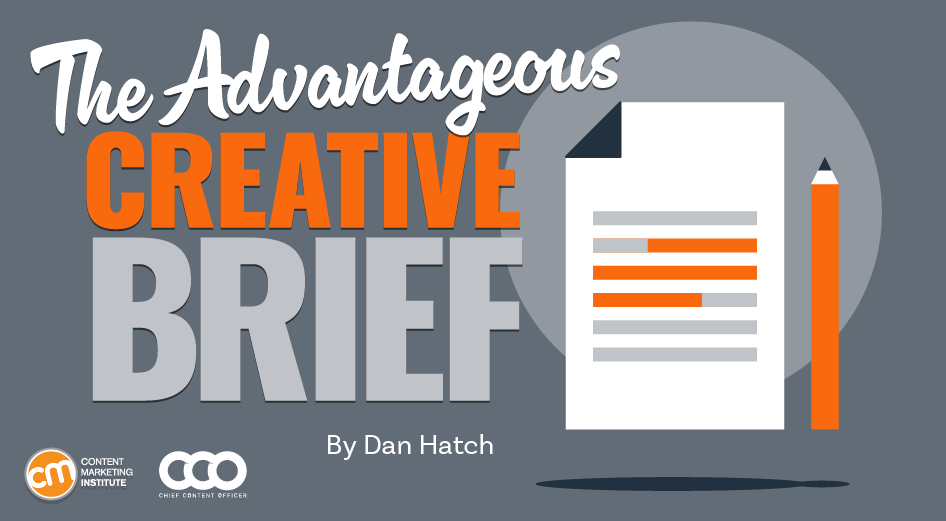MARKETING
Holy Grail Copywriting: The 5-Step Mental Model Behind Blockbuster Marketing Campaigns


Recognizing the immense value this group brings to my business, I’m eager to contribute by sharing my unique “Holy Grail Copy” methodology. This approach, though unconventional, has been pivotal in building multi-million-dollar businesses for both myself and my clients.
To pique your interest, someone once said about my frameworks:
“Your strategies are like Hansel and Gretel’s breadcrumb trail leading to the Witch’s House. But in this case, you’re the witch, and what you conjure is pure magic.”
Let’s dive in.
A few years back, I sold one of my companies internally. This move allowed me to amalgamate my diverse passions into a singular, powerful persuasion strategy. When I unveiled it last year, we observed:
- $383 per email subscriber.
- $209 per FB Group Member.
- $1.83 EPC, while the industry average was $0.53.
These figures are far from ordinary. And here’s the secret behind them:
Introducing Holy Grail Copywriting (HGC):
HGC’s core principle is “Start at the Finish Line.” In perception management, you can strategically position yourself within your prospect’s hierarchy of needs. By aligning your product with their most pressing desires, selling becomes effortless.
The 5-Step HGC Process:
1. Identify Your Prospect’s Most Pressing Pain:
While basic marketing emphasizes targeting pain points, it’s crucial to differentiate between passive pain (complaining without action) and active pain (which drives action). The key is to focus on the latter.
Differentiate Between “Moaning” and “Moving” Pain: Understand the spectrum of pain. A stubbed toe is Moaning Pain, a mere inconvenience. In contrast, the urgency of a severed thumb is Moving Pain, demanding immediate action.


Apply the DUG Checklist: Grasp the essence of the DUG checklist, a tool to categorize pain into:
- Desperation: A situation so dire that immediate action is the only option. Example: Think of a business owner teetering on bankruptcy’s edge.
- Urgency: An imminent threat that demands swift action to prevent dire consequences. Example: Picture a smoker discovering early signs of lung cancer.
- Gravity: Deeply held values or priorities that might override other considerations. Example: Visualize a parent prioritizing their child’s needs over lucrative opportunities
2. Tailor Your Product to Alleviate That Pain:
Understand what relief from this pain looks like for your prospect. Then, either create a product or reposition your existing one to offer that relief.
- Craft or Reposition Your Product: Determine the ideal solution for the identified Moving Pain and ensure your product aligns with that vision.
- Introduce Novelty: Unexpected solutions to pressing problems are often the most enticing. Always introduce an element of novelty to stand out.


3. Infuse Your Product with Unique, Attractive Qualities:
Creating allure in a product is an art. At its core, allure is about evoking emotion, creating a connection, and making a product more than just a tangible item—it becomes an experience. One of the most potent tools to achieve this is storytelling. Stories have the power to breathe life into otherwise mundane products.
- Identify Popular Cultural References: Draw inspiration from powerful symbols like the Infinity Gauntlet.
- Integrate Psychological Triggers: Weave in elements of storytelling, unique mechanisms, and shared values.


Copywriting Is Hard, We Made It Simple…
Discover The Foolproof Copywriting Formulas For Crafting Winning Sales Messaging From Scratch Every Time…Even If You Suck At Writing!
4. Use a Religion-Inspired Persuasion Sequence:
Religions have, for millennia, captivated the human spirit. It has an astonishing 83% penetration rate. They’ve done this through powerful narratives that touch upon the very essence of human existence, desires, fears, and aspirations. At the heart of many religious texts is a sequence that resonates deeply with believers: Sin, Salvation, Heaven, and Hell.
- Sin (The Problem): This represents the pain or problem your prospect faces.
- Salvation (The Solution): Here, you introduce your product as the answer.
- Heaven (The Benefits): This is the promised land, the utopia that awaits.
- Hell (The Consequences of Inaction): The bleak future that awaits if the problem remains unresolved.


5. Promote Your Product Using Diverse Marketing Angles:
With AI now optimizing ad performance, the key is to provide it with diverse data. I use the TADA Template, which helps generate multiple ad angles based on dominant human emotions. This approach allows for rapid testing across various channels.
In summary, Holy Grail Copywriting is about creating a magical “escape from moving pain” novel product, pitching it via religious persuasion sequence and shouting it loud via an infinite angle approach on paid and social media.


So there you go. Hope it helps you make a mint!
I hope this enriched perspective proves invaluable to you. If you want to find out how Holy Grail can best be deployed in your business, please email my assistant with the subject line “HOLY GRAIL!” here: [email protected]
MARKETING
How To Develop a Great Creative Brief and Get On-Target Content

Every editor knows what it feels like to sit exasperated in front of the computer, screaming internally, “It would have been easier if I’d done it myself.”
If your role involves commissioning and approving content, you know that sinking feeling: Ten seconds into reviewing a piece, it’s obvious the creator hasn’t understood (or never bothered to listen to) a damn thing you told them. As you go deeper, your fingertips switch gears from polite tapping to a digital Riverdance as your annoyance spews onto the keyboard. We’ve all been there. It’s why we drink. Or do yoga. Or practice voodoo.
In truth, even your best writer, designer, or audiovisual content creator can turn in a bad job. Maybe they had an off day. Perhaps they rushed to meet a deadline. Or maybe they just didn’t understand the brief.
The first two excuses go to the content creator’s professionalism. You’re allowed to get grumpy about that. But if your content creator didn’t understand the brief, then you, as the editor, are at least partly to blame.
Taking the time to create a thorough but concise brief is the single greatest investment you can make in your work efficiency and sanity. The contrast in emotions when a perfectly constructed piece of content lands in your inbox could not be starker. It’s like the sun has burst through the clouds, someone has released a dozen white doves, and that orchestra that follows you around has started playing the lovely bit from Madame Butterfly — all at once.
Here’s what a good brief does:
- It clearly and concisely sets out your expectations (so be specific).
- It focuses the content creator’s mind on the areas of most importance.
- It encourages the content creator to do a thorough job rather than an “it’ll-do” job.
- It results in more accurate and more effective content (content that hits the mark).
- It saves hours of unnecessary labor and stress in the editing process.
- It can make all the difference between profit and loss.
Arming content creators with a thorough brief gives them the best possible chance of at least creating something fit for purpose — even if it’s not quite how you would have done it. Give them too little information, and there’s almost no hope they’ll deliver what you need.
On the flip side, overloading your content creators with more information than they need can be counterproductive. I know a writer who was given a 65-page sales deck to read as background for a 500-word blog post. Do that, and you risk several things happening:
- It’s not worth the content creator’s time reading it, so they don’t.
- Even if they do read it, you risk them missing out on the key points.
- They’ll charge you a fortune because they’re losing money doing that amount of preparation.
- They’re never going to work with you again.
There’s a balance to strike.
There’s a balance to be struck.
Knowing how to give useful and concise briefs is something I’ve learned the hard way over 20 years as a journalist and editor. What follows is some of what I’ve found works well. Some of this might read like I’m teaching grandma to suck eggs, but I’m surprised how many of these points often get forgotten.
Who is the client?
Provide your content creator with a half- or one-page summary of the business:
- Who it is
- What it does
- Whom it services
- What its story is
- Details about any relevant products and services
Include the elevator pitch and other key messaging so your content creator understands how the company positions itself and what kind of language to weave into the piece.
Who is the audience?
Include a paragraph or two about the intended audience. If a company has more than one audience (for example, a recruitment company might have job candidates and recruiters), then be specific. Even a sentence will do, but don’t leave your content creator guessing. They need to know who the content is for.
What needs to be known?
This is the bit where you tell your content creator what you want them to create. Be sure to include three things:
- The purpose of the piece
- The angle to lead with
- The message the audience should leave with
I find it helps to provide links to relevant background information if you have it available, particularly if the information inspired or contributed to the content idea, rather than rely on content creators to find their own. It can be frustrating when their research doesn’t match or is inferior to your own.
How does the brand communicate?
Include any information the content creators need to ensure that they’re communicating in an authentic voice of the brand.
- Tone of voice: The easiest way to provide guidance on tone of voice is to provide one or two examples that demonstrate it well. It’s much easier for your content creators to mimic a specific example they’ve seen, read, or heard than it is to interpret vague terms like “formal,” “casual,” or “informative but friendly.”
- Style guide: Giving your content creator a style guide can save you a lot of tinkering. This is essential for visuals but also important for written content if you don’t want to spend a lot of time changing “%” to “percent” or uncapitalizing job titles. Summarize the key points or most common errors.
- Examples: Examples aren’t just good for tone of voice; they’re also handy for layout and design to demonstrate how you expect a piece of content to be submitted. This is especially handy if your template includes social media posts, meta descriptions, and so on.
All the elements in a documented brief
Here are nine basic things every single brief requires:
- Title: What are we calling this thing? (A working title is fine so that everyone knows how to refer to this project.)
- Client: Who is it for, and what do they do?
- Deadline: When is the final content due?
- The brief itself: What is the angle, the message, and the editorial purpose of the content? Include here who the audience is.
- Specifications: What is the word count, format, aspect ratio, or run time?
- Submission: How and where should the content be filed? To whom?
- Contact information: Who is the commissioning editor, the client (if appropriate), and the talent?
- Resources: What blogging template, style guide, key messaging, access to image libraries, and other elements are required to create and deliver the content?
- Fee: What is the agreed price/rate? Not everyone includes this in the brief, but it should be included if appropriate.
Depending on your business or the kind of content involved, you might have other important information to include here, too. Put it all in a template and make it the front page of your brief.
Prepare your briefs early
It’s entirely possible you’re reading this, screaming internally, “By the time I’ve done all that, I could have written the damn thing myself.”
But much of this information doesn’t change. Well in advance, you can document the background about a company, its audience, and how it speaks doesn’t change. You can pull all those resources into a one- or two-page document, add some high-quality previous examples, throw in the templates they’ll need, and bam! You’ve created a short, useful briefing package you can provide to any new content creator whenever it is needed. You can do this well ahead of time.
I expect these tips will save you a lot of internal screaming in the future. Not to mention drink, yoga, and voodoo.
This is an update of a January 2019 CCO article.
HANDPICKED RELATED CONTENT:
Cover image by Joseph Kalinowski/Content Marketing Institute
MARKETING
Quiet Quitting vs. Setting Healthy Boundaries: Where’s The Line?

MARKETING
Microsoft unveils a new small language model

Phi-3-Mini is the first in a family of small language models Microsoft plans to release over the coming weeks. Phi-3-Small and Phi-3-Medium are in the works. In contrast to large language models like OpenAI’s ChatGPT and Google’s Gemini, small language models are trained on much smaller datasets and are said to be much more affordable for users.
We are excited to introduce Phi-3, a family of open AI models developed by Microsoft. Phi-3 models are the most capable and cost-effective small language models (SLMs) available, outperforming models of the same size and next size up across a variety of language, reasoning, coding and math benchmarks.
What are they for? For one thing, the reduced size of this language model may make it suitable to run locally, for example as an app on a smartphone. Something the size of ChatGPT lives in the cloud and requires an internet connection for access.
While ChatGPT is said to have over a trillion parameters, Phi-3-Mini has only 3.8 billion. Sanjeev Bora, who works with genAI in the healthcare space, writes: “The number of parameters in a model usually dictates its size and complexity. Larger models with more parameters are generally more capable but come at the cost of increased computational requirements. The choice of size often depends on the specific problem being addressed.”
Phi-3-Mini was trained on a relatively small dataset of 3.3 trillion tokens — instances of human language expressed numerically. But that’s still a lot of tokens.
Why we care. While it is generally reported, and confirmed by Microsoft, that these SLMs will be much more affordable than the big LLMs, it’s hard to find exact details on the pricing. Nevertheless, taking the promise at face-value, one can imagine a democratization of genAI, making it available to very small businesses and sole proprietors.
We need to see what these models can do in practice, but it’s plausible that use cases like writing a marketing newsletter, coming up with email subject lines or drafting social media posts just don’t require the gigantic power of a LLM.
Dig deeper: How a non-profit farmers market is leveraging AI
-

 MARKETING7 days ago
MARKETING7 days agoEffective Communication in Business as a Crisis Management Strategy
-

 SEO7 days ago
SEO7 days agobrightonSEO Live Blog
-

 SEO5 days ago
SEO5 days agoGoogle March 2024 Core Update Officially Completed A Week Ago
-

 WORDPRESS5 days ago
WORDPRESS5 days ago9 Best WooCommerce Multi Vendor Plugins (Compared)
-
SEARCHENGINES6 days ago
Daily Search Forum Recap: April 25, 2024
-

 MARKETING4 days ago
MARKETING4 days agoNavigating the Video Marketing Maze: Short-Form vs. Long-Form
-
![The Current State of Google’s Search Generative Experience [What It Means for SEO in 2024] person typing on laptop with](https://articles.entireweb.com/wp-content/uploads/2024/04/The-Current-State-of-Googles-Search-Generative-Experience-What-It.webp-400x240.webp)
![The Current State of Google’s Search Generative Experience [What It Means for SEO in 2024] person typing on laptop with](https://articles.entireweb.com/wp-content/uploads/2024/04/The-Current-State-of-Googles-Search-Generative-Experience-What-It.webp-80x80.webp) MARKETING5 days ago
MARKETING5 days agoThe Current State of Google’s Search Generative Experience [What It Means for SEO in 2024]
-

 WORDPRESS7 days ago
WORDPRESS7 days agoYour New Favorite Way to Develop WordPress Locally – WordPress.com News
















